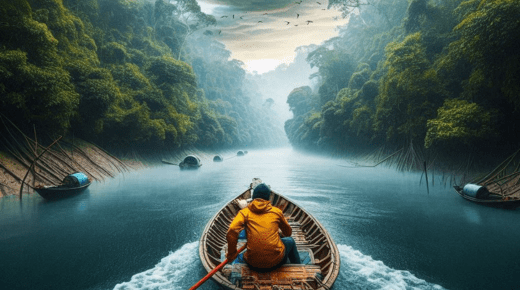Planning a getaway that blends nature, wildlife, and cultural exploration? A sundarban trip is your ticket to one of the most awe-inspiring and untouched destinations in India. Located in the southern part of West Bengal, the Sundarbans is the world’s largest tidal halophytic mangrove forest and a UNESCO World Heritage Site. It’s famous not only for its unique ecosystem but also for being the home of the majestic Royal Bengal Tiger.
This trip offers far more than just scenic beauty—it provides a raw, adventurous experience into a world where nature still reigns supreme. With its winding river channels, dense forests, and rich wildlife, the Sundarbans is a dream come true for eco-tourists, photographers, and wildlife enthusiasts.
The Magic of a Sundarban Trip
A Sundarban trip typically starts from Kolkata, with a scenic drive to the gateway towns like Canning or Godkhali. From there, travelers hop on a boat and glide through rivers like Matla and Bidyadhari, entering the heart of the forest. This journey by water is not just a mode of travel—it’s an experience in itself.
As you drift through the creeks and canals, you’ll witness endless stretches of mangrove trees, small islands, and a variety of bird and animal life. The changing tides, the silence of the jungle, and the occasional call of a distant bird create a tranquil yet thrilling ambiance.
Wildlife and Birdwatching Delights
The biggest highlight of a Sundarban trip is the chance to spot rare and wild creatures. While the Royal Bengal Tiger is the star of the show, the forest is also home to spotted deer, wild boars, saltwater crocodiles, otters, water monitor lizards, and several species of snakes.
For bird lovers, the Sundarbans is nothing short of paradise. More than 250 species of birds have been recorded here, including kingfishers, herons, egrets, storks, and migratory birds that arrive during the winter. A good pair of binoculars can turn your boat ride into an unforgettable birdwatching tour.
Boat Safari: The Heart of the Adventure
Unlike other wildlife reserves where you go on a jeep safari, a Sundarban trip lets you explore the wild via boat safaris. These cruises take you through narrow creeks, open rivers, and past mangrove-covered islands. Some safaris are conducted at dawn and dusk, which are the best times to spot animals as they come near the water.
Watchtowers like Sajnekhali, Dobanki, and Sudhanyakhali are common stops during boat tours, offering panoramic views of the forest and water bodies. You might even spot animal tracks or glimpses of wildlife through the trees.
Local Culture and Village Life
What makes a Sundarban trip even more special is the interaction with the local communities. The people living on the forest’s edge have developed a unique lifestyle, adapting to the challenging yet beautiful environment. Many tour packages include visits to villages like Pakhiralaya or Dayapur, where you can meet the locals, sample traditional Bengali meals, and enjoy cultural performances like Baul folk music.
These moments add warmth and meaning to your journey, reminding you that the Sundarbans is not only a wild habitat but also a home to resilient and hospitable people.
When to Visit the Sundarbans
The best time to plan your Sundarban trip is between November and March. The weather during this time is cooler and more comfortable for outdoor activities. Wildlife is more active, and the skies are filled with colorful migratory birds.
To ensure a smooth and memorable experience, many travelers opt for organized Sundarban tour packages, which include everything from transportation to accommodation, guided safaris, meals, and cultural activities.
Final Words
A Sundarban trip is not your typical vacation—it’s a journey into a living, breathing world where nature calls the shots. From thrilling boat rides and wildlife encounters to cultural discoveries and quiet river mornings, it’s an experience that will stay with you long after you’ve returned home. Whether you’re seeking adventure or peace, the Sundarbans delivers both in perfect harmony.

